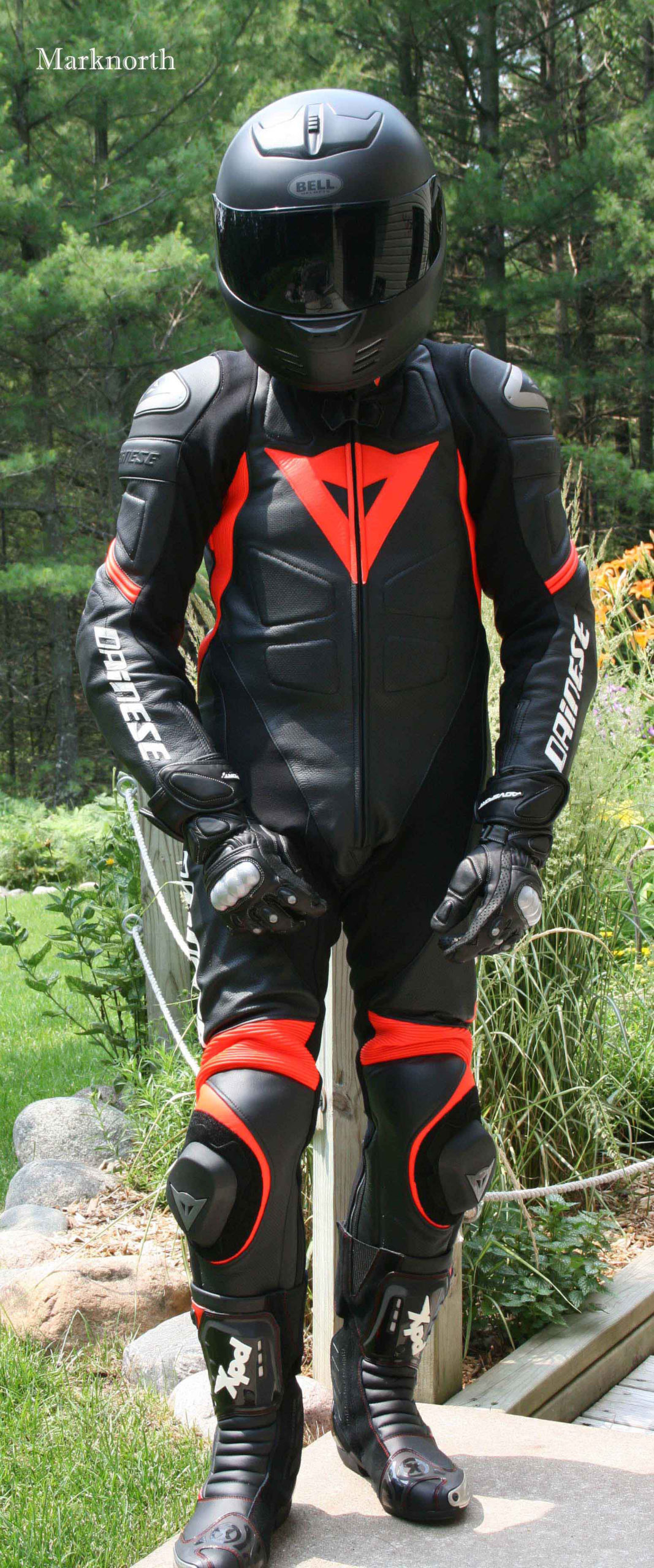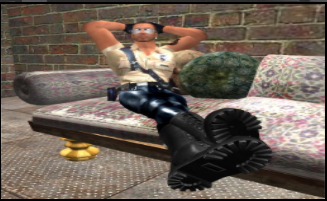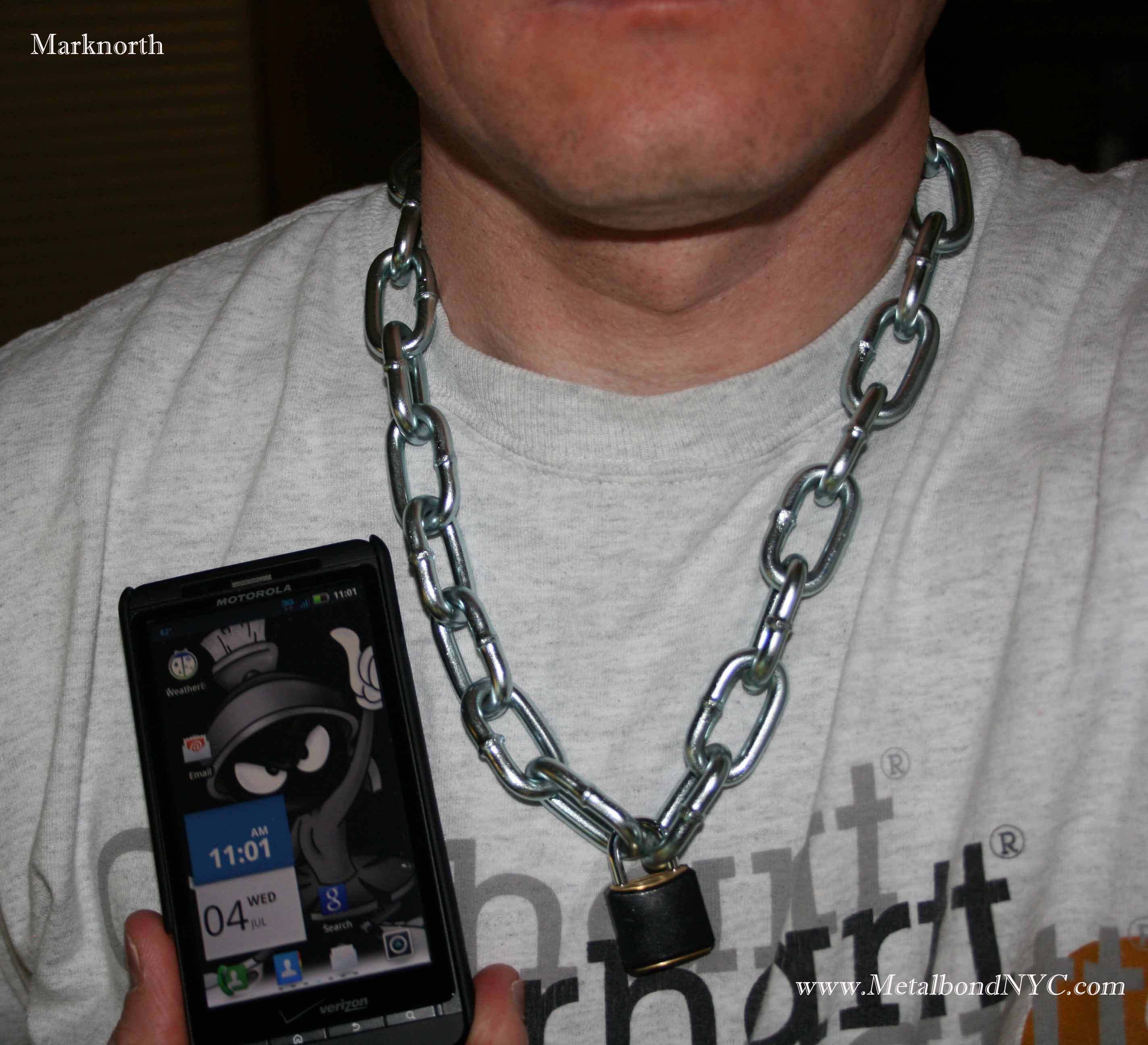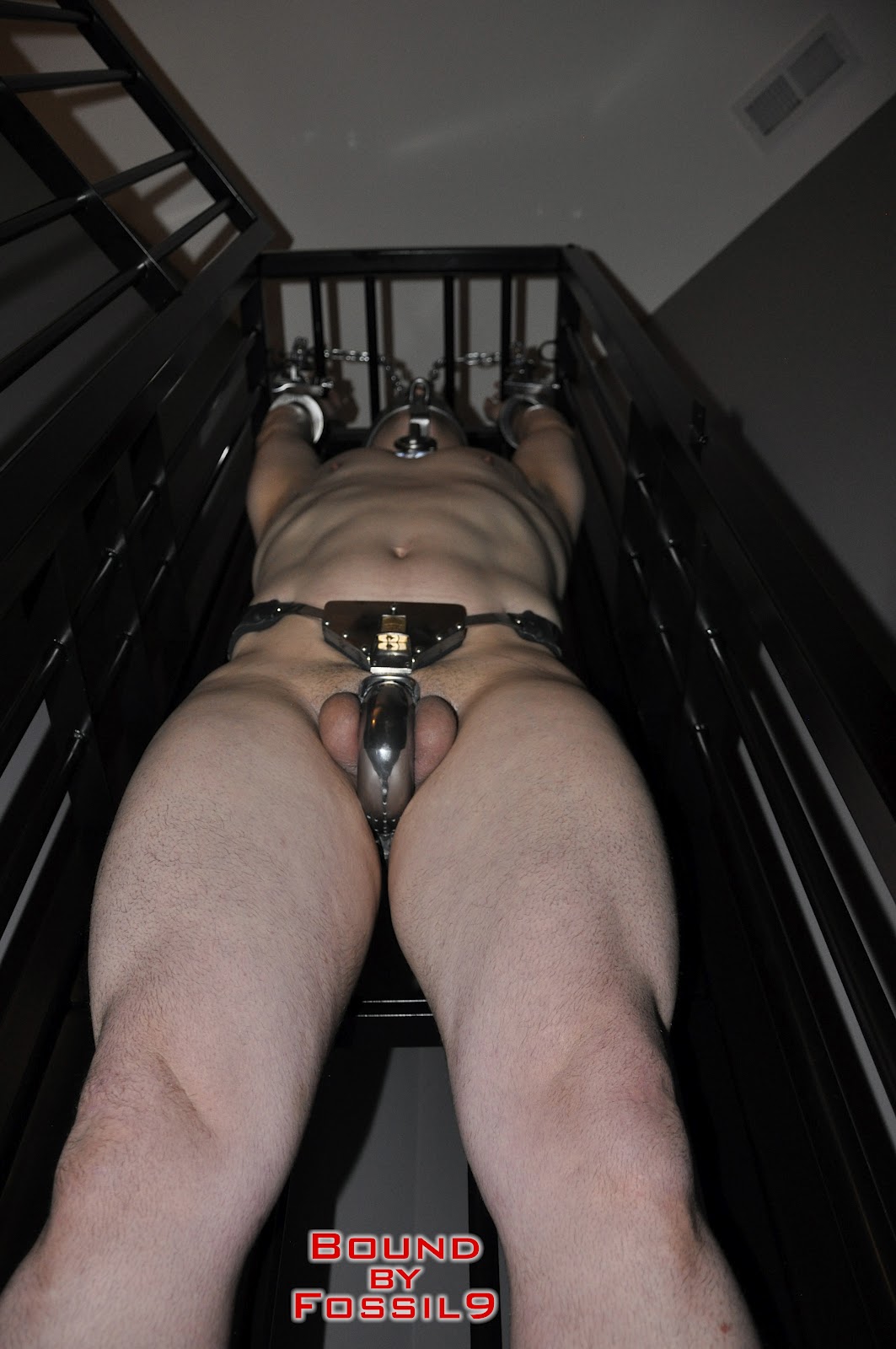Category Archives: Daily Thread
Locker Room Tales is added to the Prison Library
Hey prisoners, have you been catching up on your reading in the Prison Library? I hope so. Just remember, for those of you who are locked in chastity, there will be NO MERCY shown if the stories make you uncomfortably hard in your cock cages.
For those of you who are interested in locker room bullying (of the homoerotic/bondage variety) you might want to check out Locker Room Tales – Never a Jock by Marknorth. This is a story that I just migrated from the old site, so check it out.
Good news for those who like this story: There will be TWO brand-new installments of Locker Room Tales coming to Metalbond, so keep checking back often.
Unfreedom Day — a true adventure by Marknorth
Hey guys, Marknorth is spending Independence Day with a chain collar locked on. It’s not the tightest of collars, but you gotta give the guy credit for trying. He also sent a true-life self-bondage story, which is below the picture.
Unfreedom Day
By Marknorth
Dear Metal,
I spent the night before Independence Day in a chain collar. It reminded me of the loss of freedom.
Several weeks ago I had a weekend with no obligations or plans, so I decided to use the time to do a self-bondage lock-down in my cell.
Put in the usual supply of water and protein shakes – and straws.
Let my dick choose the length of time to be locked away – 18 hours.
Utilized the typical set-up; padded hood, leather cuffs (ankle and wrist), leather collar (2” fetters), all locked and linked by heavy chains. Secured a chain from the ankles to the I-bolt, making escape from the cell impossible, without using the “fail safe” key. No cock-lock, just an under armour jock and cup.
I decided to wear racing leathers and boots to complete the experience. Love the way the leathers fit – tight in all the right places.
Was in the cell and had everything locked on by 6:00 pm Friday night – having forgone dinner to avoid a call from nature.
No escape until the keys dropped from the mag-lock at around noon on Saturday.
My hard-on usually doesn’t dissipate for several hours after the initial lock-down; so the struggle within the hard-cup adds some discomfort – although not as much as a chastity cage.
It didn’t take long to start to heat up inside the hood and leathers, but that was to be expected.




Since there is no way to mark time, it is hard to tell exactly when it starts to become uncomfortable and the “real” lock-up begins as the initial “buzz” wears off; but that is the point, after all – it’s not bondage until you want out.
This was the first time that I had worn the leathers for a lock-up of more than a few hours, and it was apparent that they were going to add a level of discomfort that was unexpected – especially the increase in body heat.
Also found out that getting to my dick to piss was a serious amount of work – the zipper on the leathers doesn’t extend quite far enough to allow for moving the hard cup out of the way easily.
So every time I had to piss was a frustrating struggle. Didn’t test that part out ahead of time – an error on my part, as I usually consider all the possibilities and test them out before locking things in place. This time, though, it didn’t seem like it would be an issue ahead of time.
So, time passed, the level of discomfort increased making it hard to sleep. I know I dozed off but not for long periods.
Of course, as the discomfort builds, so does the frustration of not being able to get free.
It soon became a series of attempts to find a way to get more comfortable – pacing, kneeling, sitting, laying down on the cot trying to sleep. Nothing was working and the frustration continued to build.
For the first time in a long time the thought of having to use the “fail safe” kept coming to the forefront.
I love the leathers, love the hood, and love being locked up – but for some reason the combination that night was making me overly miserable – and I wasn’t sure that I could make it for the duration.
As more time passed it became apparent to me that I needed to get out and get relief.
Eventually I caved in. My “fail safe” key is kept in a large plastic juice bottle that is filled with motor oil. The opening is too small to stick my hand in, so it needs to be poured out to get to the key. That creates an unbelievable mess on the floor! But my frustration overcame what I knew would be a long and tedious clean-up.
I dumped the oil out and got the key – regretting that step already.
That key opens the lock box with the necessary keys to remove the restraints.
Once I had the locks off and removed the restraints and hood – and the leathers and boots, I left the cell (frustrated at the mess and for failing to make the full 18 hours).
I almost screamed when I looked at the clock – it was 10:50 am – I would have only made it a little over an hour more before I would have been freed!!
Now I was really pissed at myself – such a fucking wuss!!!
Cleaning up the oil took over an hour – and it stained the concrete on the cell floor.
The mess confirmed the “price” for using the “fail safe” – it’s there for an emergency – it worked as needed and verified that I would always be able to get out of the restraints quickly should that emergency arise (something that I have never had to test before).
Lesson learned – man-up and tough it out – I’ve done it many times before. I’m going to do it many times more.
I’ll be punishing myself with a longer lock up with the same set-up in near the future.
Thought you might get a kick out of that episode – I wasn’t going to share it with you because is somewhat embarrassing. Was the first time that I wimped out in a self-lock-up and I have spent so much more time locked up under those circumstances.
Your continued prisoner,
Mark
Metal would like to thank Marknorth for the account above.
Fossil9
Check out these images from Fossil9:
This man definitely knows how to keep a prisoner locked up securely! You can see more at his blog, BOUND by Fossil9
We are going for the world handcuff record
Hey guys, this is important, listen up! We’re going to go for some sort of handcuff world record. That’s right fuckers, I want one Metalbond reader to get in the Guinness Book. I am totally fucking serious about this.
This endeavor was inspired by longtime Metalbond reader and contributor Chuck:
… and it is being instigated by none other than Mikeintightpants.
Mikeintightpants writes:
Well done Chuck, that’s a great pic and it undoubtedly gave you a “hard” time when that lot was locked on – I’ve counted 20 pairs.
No, there’s nothing in the Guinness book of records to show the most handcuffs worn at one time, the nearest they get to it is to record the largest handcuff collection, but the collection that’s featured is no longer in existence as it’s had to be sold as the owner got into trouble and no doubt found himself wearing cuffs involuntarily, together with a spell in prison.
However, the UK publication “The Book of Alternative Records” deals with a number of records set for the most people handcuffed together – not quite what was meant by the question posed but it’s still an interesting theme.
In January 2007, 305 Metropolitan police officers and Special Constables were handcuffed together (with their own cuffs, of course) in London. In May 2009, 430 police recruits locked themselves together in Scotland and their record was beaten in February 2010 when 562 Mounties were locked together in Saskatchewan, Canada. All the above events were organized for the benefit of various charities.
Following a recent meeting with a couple of my cuff buddies (and with the approval of Metal) it’s my intention to claim (informally on this site) a new world record for a handcuffing experience — don’t worry Chuck, I’m not planning to challenge your record (yet!), mine is something a bit different.
Hopefully Metal will agree to post my claim as a separate current thread on the new site?
You got it. Mikeintightpants! Let’s see what you got buddy!
Meanwhile, I want every reader to start brainstorming ideas NOW on how at least one of us can get into the Guinness book for some sort of handcuffs record.
This is a serious challenge, and it is an order!
Get to it, prisoners!
You can email me by clicking the tab from the About page.
Dirk Praga
 I learned with great sadness recently of the passing of Dirk Praga.
I learned with great sadness recently of the passing of Dirk Praga.
 Unfortunately I do not have pictures that do Dirk justice, but trust me, Dirk was one of HOTTEST men in Second Life. He was also one of the nicest. Even better, he was SERIOUS about metal bondage. He sure knew how to make the locks inescapable, the predicaments challenging, and the dungeon accommodations secure and uncompromising. He was always willing to teach a “noob” the ropes, and he was generous by sharing his living accommodations and his prison facilities. He also protected many others. That’s right, despite his quite intimidating looks — often in full leather and mirrored sunglasses — he was also incredibly friendly.
Unfortunately I do not have pictures that do Dirk justice, but trust me, Dirk was one of HOTTEST men in Second Life. He was also one of the nicest. Even better, he was SERIOUS about metal bondage. He sure knew how to make the locks inescapable, the predicaments challenging, and the dungeon accommodations secure and uncompromising. He was always willing to teach a “noob” the ropes, and he was generous by sharing his living accommodations and his prison facilities. He also protected many others. That’s right, despite his quite intimidating looks — often in full leather and mirrored sunglasses — he was also incredibly friendly.
 He is greatly missed by his many friends, including Rio Naidoo, Gimpsub Crazyboi, Steel Vlodovic — and many, many more.
He is greatly missed by his many friends, including Rio Naidoo, Gimpsub Crazyboi, Steel Vlodovic — and many, many more.
Second Life will never be the same, nor nearly as exciting, without Dirk Praga.
Dirk, I salute you.
You are greatly missed.
Boot Lust

Spiderman is tied up and sucked off
 I love superheroes in bondage!
I love superheroes in bondage!
Today’s artwork is by Herodotus. You can find a link to Herodotus on the Links page.






